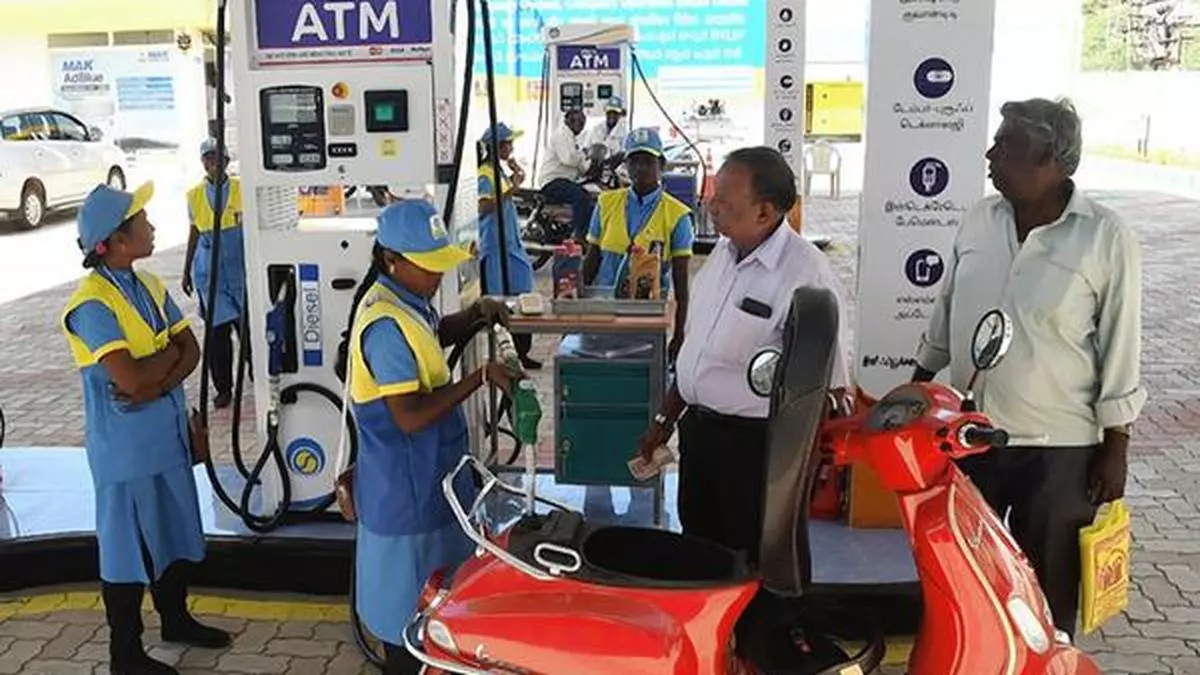
IOC, BPCL, HPCL post ₹81,000 crore record profit in FY24
All the three companies posted the highest ever standalone as well as consolidated net profit in FY24
State-owned fuel retailers Indian Oil Corporation, Bharat Petroleum Corporation Ltd and Hindustan Petroleum Corporation Ltd reported bumper profits totalling about ₹81,000 crore in FY24, which far exceeded their annual earning in pre-oil crisis years.
The combined standalone net profit of IOC, BPCL and HPCL in April, 2023 to March, 2024 (FY24) was better than their annual earning of ₹39,356 crore in pre-oil crisis years, regulatory filings by them showed.
All the three companies posted the highest ever standalone as well as consolidated net profit in FY24.
The retailers have resisted calls to revert to daily price revision and pass on softening in rates to consumers on grounds that prices continue to be extremely volatile, rising on one day and falling on the other and that they needed to recoup losses incurred in the year when they kept rates lower than cost.
IOC in 2023-24, posted a standalone net profit of ₹39,618.84 crore, according to the company's regulatory filing.
This is compared with ₹8,241.82 crore annual net profit in 2022-23. While the company could argue that FY23 was impacted by the oil crisis, the FY24 earnings are higher than even the pre-crisis years ₹24,184 crore net profit in 2021-22 and ₹21,836 crore in 2020-21.
BPCL posted a net profit of ₹26,673.50 crore in FY24, higher than ₹1,870.10 crore earning in 2022-23 and ₹8,788.73 crore in FY22.
HPCL's 2023-24 profit of ₹14,693.83 crore is compared with a ₹8,974.03 crore loss in FY23 and a profit of ₹6,382.63 crore in 2021-22, according to the filings.
The losses in FY23, led to Finance Minister Nirmala Sitharaman announcing ₹30,000 crore for IOC, BPCL and HPCL to support their energy transition plans in her budget for 2023-24. Mid-way through the year, that support was halved to ₹15,000 crore.
The support which was to happen by way of equity infusion via a rights issue, hasn't been given yet.
The three companies, which control roughly 90 per cent of India's fuel market, 'voluntarily' have not changed petrol, diesel and cooking gas (LPG) prices for the past two years, resulting in losses when input cost was higher and profits when raw material prices were lower.
They posted a combined net loss of ₹21,201.18 crore during April-September, 2022 despite accounting for ₹22,000 crore announced but not paid LPG subsidy for the previous two years.
Subsequent softening of international prices and government giving out LPG subsidy helped IOC and BPCL post annualised profit for 2022-23 (April, 2022 to March, 2023 ) but HPCL was in the red.
In FY24, things have changed dramatically.
The three firms posted record earnings in the first two quarters (April-June and July-September) when international oil prices - against which domestic rates are benchmarked and almost halved to $72 a barrel from a year ago.
International prices rose again in the subsequent quarter to $90, leading to moderation of their earnings.
However, on a year as a whole, they had rich profits.
The fuel price freeze that began on April 6, 2022, had a loss as high as ₹17.4 a litre on petrol and ₹27.7 per litre on diesel for the week ended June 24, 2022.
However, subsequent softening led to losses being eliminated.
And in mid-March, they cut petrol and diesel prices by ₹2 per litre each, just before general elections were announced.
International oil prices have been turbulent in the last couple of years.
It dipped into the negative zone at the start of the pandemic in 2020 and swung wildly in 2022 - climbing to a 14-year high of nearly $140 per barrel in March, 2022 after Russia invaded Ukraine, before sliding on weaker demand from top importer, China and worries of an economic contraction.
However, for a nation that is 85 per cent dependent on imports, the spike meant adding to already elevated levels of inflation and derailing the economic recovery from the pandemic.
So the three fuel retailers froze petrol and diesel prices for the longest duration in the last two decades.
They stopped daily price revision in early November, 2021 when rates across the country hit an all-time high, prompting the government to roll back a part of the excise duty hike it had effected during the pandemic to take advantage of low oil prices.
The freeze continued into 2022, but, the war-led spike in international oil prices prompted a ₹ 10 a litre hike in petrol and diesel prices from mid-March, 2022 before another round of excise duty cut rolled back all of the ₹13 a litre and ₹16 a litre increase in taxes on petrol and diesel done during the pandemic.
That followed the current price freeze which began on April 6, 2022 and continued till March 15 reduction.
Thereafter, there has been a freeze in rates again.
Comments
